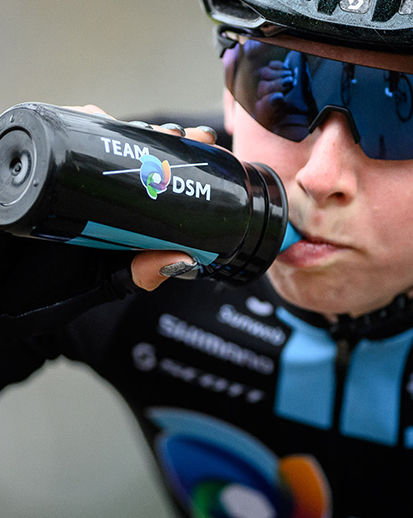Planet at a glance
25%1
absolute reduction of scope 1 + 2 greenhouse gas emissions
versus baseline 2016
~18%
structural improvement of scope 1 + 2 greenhouse gas emissions
versus baseline 2016
5%
scope 3 greenhouse gas emissions intensity improvement
versus baseline 2016
60%
purchased electricity from renewable resources
5.7%
energy efficiency improvement
year-on-year
4.8%
water efficiency improvement
year-on-year
1 All data presented in Planet are subject to the non-financial reporting policy.
Acting on our responsibilities in terms of environmental stewardship
We take our global environmental and social responsibilities very seriously. These extend beyond our own operations to include those of our suppliers, customers and end-users. We fulfill our environmental responsibilities through our portfolio of Brighter Living Solutions, our Safety, Health & Environmental (SHE) policy, and our position on issues such as product stewardship and biodiversity. We focus on:
- Improving our own environmental footprint
- Enabling our customers to do the same through innovative solutions
- Advocating on our key environmental topics
Our operational footprint and approach to reporting
Our operations network spans more than 110 commercial production facilities in 40 countries. Our operational approach is led by the DSM Responsible Care Plan, described below, and supports the Sustainable Development Goals (SDGs), especially SDG 7 (Affordable and Clean Energy), SDG 12 (Responsible Consumption and Production) and SDG 13 (Climate Action), among others.
We report our environmental performance according to the relevant material topics
Our Planet reporting addresses our performance on several material topics identified in our Materiality matrix refresh:
1 All data presented in Planet are subject to the non-financial reporting policy.
Brighter Living Solutions (BLS) is DSM’s program for the development of sustainable, innovative solutions with environmental and/or social benefits, creating shared value for our stakeholders. Brighter Living Solutions are products, services and technologies that, considered over their life cycle, offer a superior environmental impact (ECO+) and/or a superior social impact (People+) when compared to the mainstream alternative for the same application. The impact of Brighter Living Solutions can be realized at any stage of the product life cycle, from raw materials through the manufacturing process to potential re-use and end-of-life disposal.
Within the program, DSM conducts an annual ‘Product Category Sustainability Review’ for all product categories. This review identifies environmental and social impact differentiators and risks for each of our product categories and confirms the mainstream reference solution. To substantiate the identified differentiators DSM uses comparative Life Cycle Assessments (LCAs) and/or expert opinions to determine whether a product has a superior performance and can be identified as a Brighter Living Solution.
Primary energy is energy that has not yet been subjected to a human engineered conversion process. It is the energy contained in unprocessed fuels.
Final (consumed) energy is the energy that is consumed by end-users. The difference between primary energy and final consumed energy is caused by the conversion process between the two as well as any transmission losses.
Scope 1: Direct GHG emissions
Direct GHG emissions occur from sources that are owned or controlled by the company (i.e., emissions from combustion in owned or controlled boilers, furnaces, vehicles, etc.).
Scope 2: Indirect GHG emissions
Indirect GHG emissions relate to the generation of purchased energy (i.e., electricity, heat or cooling) consumed by the company. Purchased energy is defined as energy that is purchased or otherwise brought into the organizational boundary of the company. Scope 2 emissions physically occur at the facility where the energy is generated.
Scope 3: Value chain emissions
Scope 3 emissions are all indirect emissions (not included in scope 2) that occur in the value chain of the reporting company, including both upstream and downstream emissions.
Location-based emissions
Reflects the average GHG emissions intensity of grids on which electricity consumption occurs (using mostly national grid-average emission factor data). Corresponding emission factor: in most cases, the country emission factor.
Market-based emissions
Reflects GHG emissions from electricity supplies that companies have purposely chosen (or their lack of choice) and contracted. Corresponding emission factors:
- Supplier specific emission factor (provided by the supplier)
- Residual emission factor (country-based grid factor, corrected for allocated purchased electricity from renewable resources)







